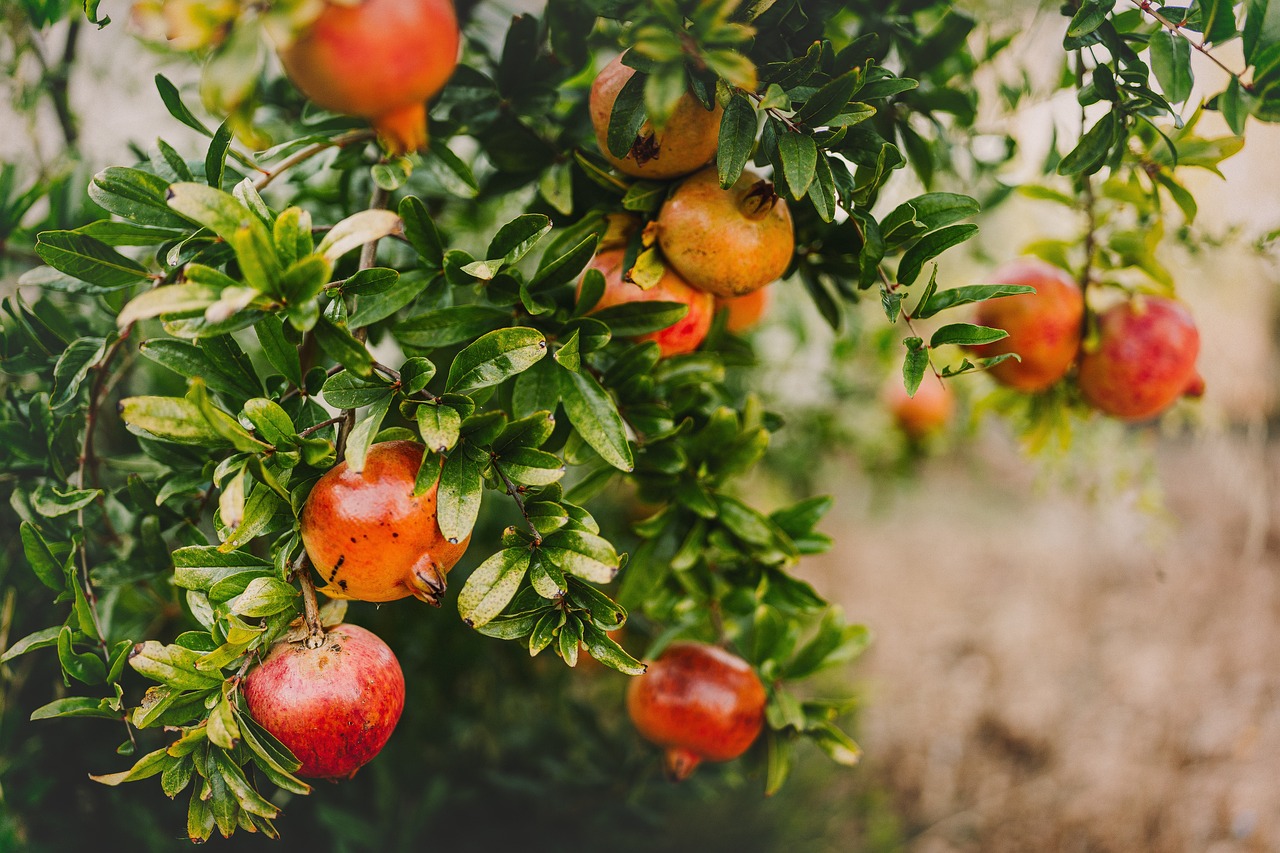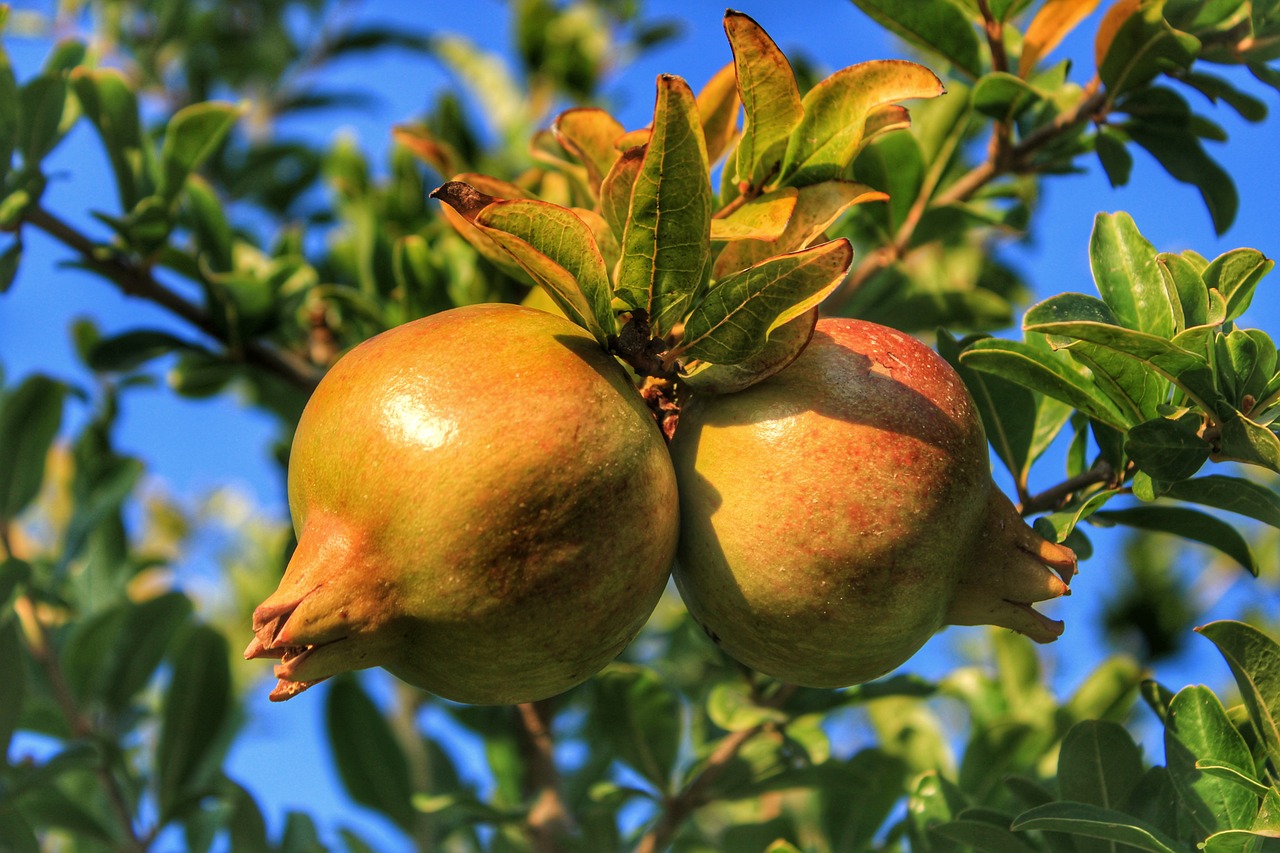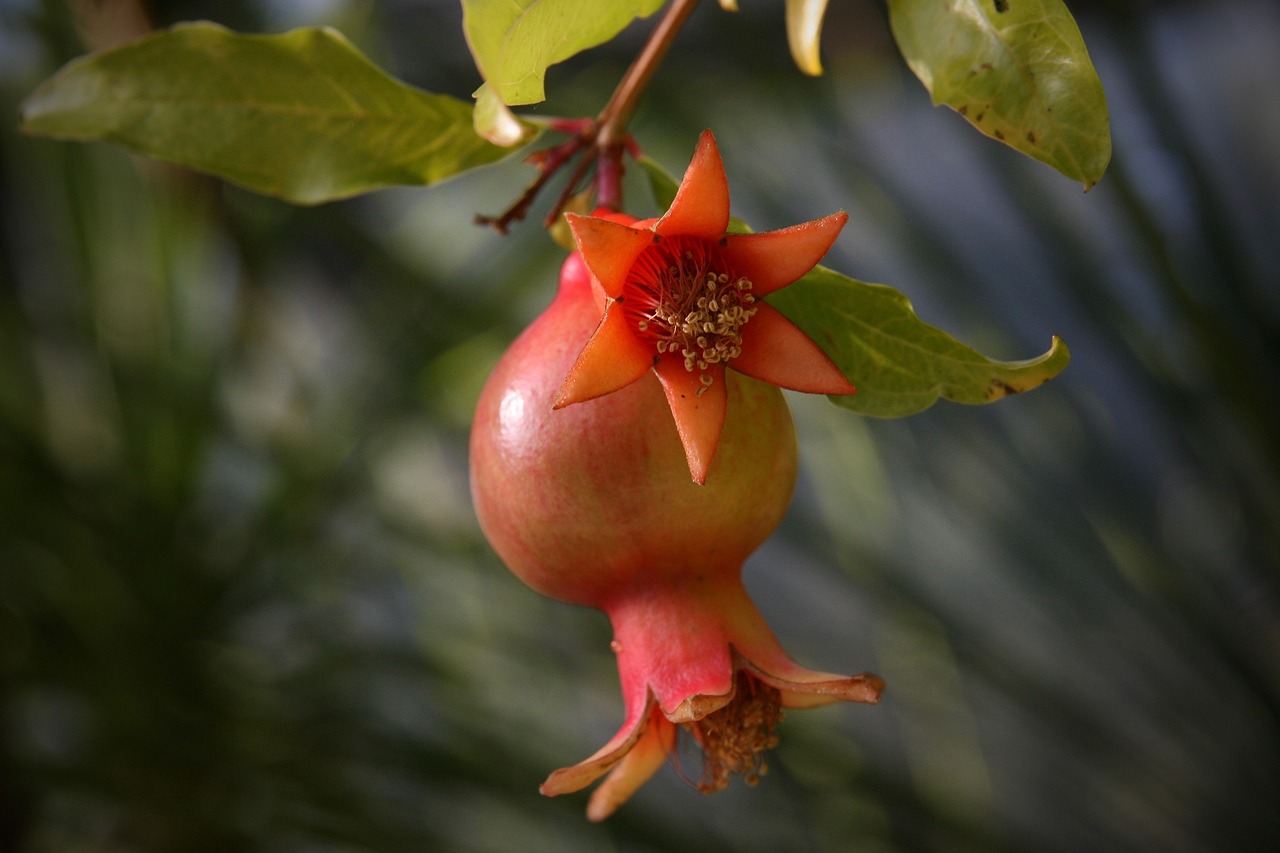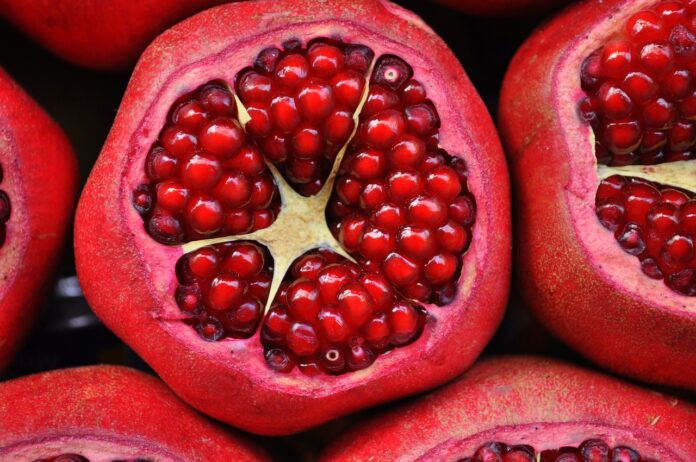Pomegranate peel is tart and slightly bitter, but even it is valuable and beneficial to the body. The juicy, sweet red seeds inside are irresistible, like precious rubies that tempt you to pop them into your mouth, savor the burst of flavors, and fill your body with vital juice, vitamins, minerals, and micronutrients. This fruit is often called the “king of fruits,” and it fully lives up to its title. Everything about it is useful, and pomegranate is used in cooking, medicine, and cosmetics.
The “seedy apple” has long ceased to be exotic or inaccessible. Shoppers have become accustomed to seeing its round, red sides on the shelves of stores and supermarkets. However, few know how the fruit gets there, where it grows, or what the plant looks like.
The Legend of the Pomegranate Tree
The story of the shrub from the Lythraceae family, which produces these sugary, seed-filled fruits, begins with an ancient legend. It tells of pure and selfless love between a young man and a girl.
Everything was going well for them: their parents approved of the marriage, and the wedding was near. But a malevolent spirit intervened, transporting the lovers to a deserted place where not even animal paths existed. The couple searched for a way home, but to no avail. Exhausted, they fell asleep on the ground.
In the young man’s dream, the evil spirit appeared and told him that only one of them could escape. The young man decided that his beloved should live, and without hesitation, he drove a dagger into his heart. As he died, he whispered to the girl, “You are young and beautiful, and you will find another husband. Live and be happy.”
Where the young man’s blood fell, a pomegranate tree grew. The girl took one of its fruits with her when the evil spirit returned her home. She and her descendants grew many trees from its seeds, spreading the fruit throughout the world.
Where Does Pomegranate Grow?
This plant has indeed spread across the Mediterranean in countries with tropical and subtropical climates. The pomegranate bush’s homeland is believed to be Iran, and it likely originated in the Late Cretaceous period, later spreading to the Middle East, Central Asia, and the Black Sea coast. Today, pomegranates are cultivated in Afghanistan, Iraq, Azerbaijan, Spain, Greece, and many other countries.
In Russia, “seedy apples” are grown along the Black Sea coast, in Dagestan, and in North Ossetia. The peak harvest season for these ruby-red fruits is in autumn, from September to November. However, with proper storage techniques, pomegranates can be enjoyed year-round while retaining their appearance and nutritional benefits.
Moreover, it’s not difficult to grow a pomegranate at home. The plant is quite easygoing and twice a year rewards its owner with fruits.
How Does Pomegranate Bloom?
The shrub blooms with large flowers throughout the warm season. White, scarlet, yellow, and crimson flowers, shaped like lilies and bells with serrated edges, have fleshy green tubes at the base and end with long pistils and stamens. Their velvety petals, set against the green foliage, are captivating even to the most indifferent passerby.
It takes just 3-4 days from the appearance of a bud to fruit set, but new blossoms emerge continuously, giving the impression that the plant is always in bloom. The flower clusters are especially picturesque in the morning sun, when dewdrops or raindrops sparkle on them.
A Few Interesting Facts
- The literal Latin name for the plant translates as “apple filled with stones.”
- Pomegranate fruits were placed in the sarcophagi of pharaohs as a sign of respect for the departed rulers.
- It’s believed that pomegranate trees grew in the Garden of Eden.
- Pomegranates can be consumed dried, which extends the storage life of the fruit while preserving all its beneficial qualities.
- Some varieties of pomegranate trees are grown for bonsai in Japan.
- Although very sweet, pomegranate is low in calories, which is why dietitians often include it in weight-loss menus.
- The largest pomegranate was grown in China, with a diameter of 50 cm. Its massive size even earned it a spot in the Guinness Book of World Records.
